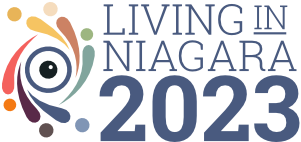The following chart shows the number of immigrants in the St. Catharines – Niagara Census Metropolitan Area (CMA), by decade, from 1971 to 2011.
Source: Statistics Canada. (2013, May 8). Religion (108), immigrant status and period of immigration (11), age groups (10) and sex (3) for the population in private households, NHS, 2011.
Retrieved from http://communitydata.ca/content/religion-108-immigrant-status-and-period-immigration-11-age-groups-10-and-sex-3-population
“Immigration and Ethnocultural Diversity: Key Results from the 2016 Census” was released by Statistics Canada on October 25, 2017. On Census Day 2016, 21.9% of the Canadian population reported they were or had ever been a landed immigrant or permanent resident in Canada. This proportion is close to the 22.35 recorded during the 1921 Census, the highest level since Confederation.
In 2016, Canada had 1,212,075 new immigrants who had permanently settled in Canada from 2011 to 2016. These recent immigrants represented 3.5% of Canada’s total population in 2016.
The majority (60.3%) of these new immigrants were admitted under the economic category, 26.8% were admitted under the family class to join family already in the country, and 11.6% were admitted to Canada as refugees.
For the first time, Africa ranks second, ahead of Europe, as a source continent of recent immigrants to Canada, with a share of 13.4% in 2016. Asia (including the Middle East) remains, however, the top source continent of recent immigrants. In 2016, the majority (61.8%) of newcomers were born in Asia.
Toronto, Vancouver and Montréal are still the place of residence of over half of all immigrants and recent immigrants to Canada. More immigrants are settling in the Prairies and in the Atlantic provinces.
Source: Statistics Canada
Retrieved from: http://www.niagaraknowledgeexchange.com/resources-publications/immigration-and-ethnocultural-diversity-key-results-from-the-2016-census/
Geographic distribution of immigrants and recent immigrants and their proportion within the population of Selected Census Metropolitan Areas (CMAs) in Canada, 2016
- The distribution shows the percentage breakdown of the immigrant population (or recent immigrants) in Canada by census metropolitan area (CMA). 2. The proportion shows the percentage of immigrants (or recent immigrants) in a given geographical area compared to the total population living in this same geographical area.
Source: Statistics Canada, Census of Population, 2016.
Retrieved from: https://www.statcan.gc.ca/daily-quotidien/171025/t001b-eng.htm
Note: St. Catharines – Niagara CMA* does not include Grimsby and West Lincoln.
Urban Census metropolitan area (CMA) is an area consisting of one or more neighbouring municipalities situated around a major urban core. A CMA must have a total population of at least 100,000 of which 50,000 or more live in the urban core. Urban non-Census metropolitan areas (non-CMAs) are smaller urban areas with a population of less than 100,000. Rural areas include all territory lying outside of urban areas, excluding Indian reserves. They include remote and wilderness areas, agricultural lands, as well as small towns, villages and other populated places with a population of less than 1,000 and a density of less than 400 persons per square kilometre.
Source: Statistics Canada. https://www.statcan.gc.ca/pub/81-004-x/2009004/def/cma-rmr-eng.htm
Where Immigrants Live in Canada Interactive Map
The Canadian Broadcasting Corporation (CBC) notes that nearly 22% of Canada’s population are immigrants, according to the latest Census figures. CBC provides an interactive map based on 2016 Census data from Statistics Canada. The map shows changes in where immigrants to Canada live, by census tract. The map includes a zoom feature that shows how immigrant populations have changed since the 2011 census.
Source: Where Immigrants in Canada Live – Interactive Map, CBC News, October 25, 2017
Retrieved from: http://www.cbc.ca/news/politics/map-where-immigrants-in-canada-live-1.4372261
Settlement Services in Niagara
Niagara Folk Arts Multicultural Centre (NFAMC) is a charitable not-for-profit organization incorporated as the Folk Arts Council of St. Catharines in 1970, having the mandate to support and assist the ethno-cultural and newcomer community in Niagara through a broad range of programs and services. NFAMC has been active in facilitating and supporting the successful settlement and integration of newcomers since the 1960’s. The centre’s clients come from all parts of the world and include Landed Immigrants, Canadian Citizens, Convention Refugees and Refugee Claimants.
A full range of programming is offered by 30 full-time staff and over 100 volunteers. English Language Instruction has been offered since 1976 and a Job Search Workshop Program was introduced in 1998. A Community Connections Program began in 1996 to facilitate friendships between newcomers and Canadians and to introduce families to community volunteer opportunities. A Youth Program was successfully added to Community Connections in 2008. All clients are supported by a professional team of Settlement Counselors and a Childminding Program for infants and toddlers.
Services are offered at a main Centre in downtown St. Catharines as well as an office in Niagara Falls and itinerant locations in Welland. Services are funded from various sources including Citizenship and Immigration Canada, the Ontario Ministry of Citizenship and Immigration, District School Board of Niagara, Niagara Region Prosperity Initiative and the United Way.
FACES (Folk Arts Council Entertainment Services), the fundraising arm of the Niagara Folk Arts, assists established ethno-cultural groups in the local community to organize and undertake cultural activities, including the annual Niagara Folk Arts Festival. Robertson Hall Banquet Facilities, located behind the NFAMC main location at 85 Church Street in St. Catharines has two halls and a full kitchen available for rent. It is also a popular meeting place for local arts and cultural groups and a base for social enterprise.
NFAMC is governed by a volunteer Board of Directors elected by a membership of over 50 ethno-cultural associations, community groups and individuals. Operations are overseen by a CEO/Executive Director.
Source: Niagara Folk Arts Multicultural Centre
Retrieved from: http://www.folk-arts.ca/
In 2017, NFAMC shared annual data around status, language and country of origin, for fiscal years 2014-15, 2015-26, and 2016-17, in a 2017 Blog post on the Niagara Knowledge Exchange (NKE). The information provided includes: client immigration status; number of clients served; gender of clients served; age range of clients served; length of residence in Canada; and clients’ country of origin. More detailed data can be found here.
Source: Niagara Folk Arts Multicultural Centre (NFAMC)
Retrieved from: http://www.niagaraknowledgeexchange.com/community-blog/newcomer-data-available-to-inform-niagara-planning-and-decision-making/
In 2016, the Niagara Folk Arts Multicultural Centre received two Niagara Prosperity Initiative (NPI) grants to support newcomers:
- $14,289.98 to support half-day (morning) ESL classes in 3 St. Catharines neighbourhoods (Downtown, The Haig, Fairview) for newcomers to Canada, coordinated with a summer program for newcomer children age 6-12 that enables clients to continue to learn English over the summer months while their children are in programming.
- $31,981.22 to support the Health Attack weekly after school program in 2 St. Catharines neighbourhoods (Downtown, Lakeport) for children age 6-12 with a healthy living focus each week and for PD Day and March Break camps throughout the school year. Program participants access and learn about healthy foods while also participating in weekly activities.
Source: Niagara Prosperity Initiative
Retrieved from: https://www.niagararegion.ca/social-services/niagara-prosperity-initiative/projects.aspx
Welland Heritage Council and Multicultural Centre (WHC&MC) provides newcomers and Canadian citizens (community members) with services and programs that strengthen individuals, families, and the community, while creating a cultural awareness and understanding among all citizens. WHC&MC assists all individuals to function with independence and dignity in society.
Source: Welland Heritage Council and Multicultural Centre
Retrieved from: http://www.wellandheritagecouncil.com/
Fort Erie Multicultural Centre is a social profit charitable organization, governed by a volunteer Board of Directors, committed to carrying out its mission to assist newcomers arriving in Fort Erie to settle successfully into Canadian society. Fort Erie has a strong and consistent history of welcoming and integrating newcomers, its earliest days connected to the abolishment of slavery in 1793 in Upper Canada (now Ontario) and the famous Underground Railroad. Situated at the largest border crossing for refugees in Canada, Fort Erie is both a gateway community and a place that newcomers like to call their new home.
Source: Fort Erie Multicultural Centre Annual Report, March 31, 2017
Retrieved from: http://www.niagaraknowledgeexchange.com/resources-publications/fort-erie-multicultural-centre-annual-report/
In 2014-15, the YMCA of Niagara connected 561 newcomers and their families with a wide range of vital community resources as they find their path in Canada. In 2015-2016 this number rose to more than 1, 500. The YMCA Newcomer Information Centre (NIC) provides up-to-date information, referrals, and workshops related to settlement in Canada.
Source: YMCA of Niagara, Annual Report to the Community 2014-15; and 2015-2016.
Retrieved from: http://www.flipgorilla.com/p/23837411469452859/show#/23837411469452859/4 and https://www.flipgorilla.com/p/24819575044440519/show
Niagara Refugee Assistance Committee
The Niagara Refugee Assistance Committee is comprised of 40 organizations including government, education institutions, settlement agencies and faith groups. Together these groups focus on housing, health care, fundraising, volunteers and private sponsors for Syrian refugee families. The Syrian Refugee Information Portal is housed on the Niagara Folk Arts Multicultural Centre website, at: http://www.folk-arts.ca/syrian-refugee-information-portal/
In 2017, settlement agencies and community partner organizations in Niagara are coming together to discuss, describe, and plan for action to address access to mental health services for newcomers.
In October, 2017, a Newcomers and Refugees in Niagara Community Forum was held at Silver Spire United Church in St. Catharines. It was hosted collaboratively by Fort Erie Multicultural Centre, Niagara Folk Arts Multicultural Centre, Seedling for Change in History, Silver Spire United Church, Welland Heritage Council and Multicultural Centre, and the YMCA of Niagara.
Forum discussions described the immigration landscape in Niagara. Panel discussions included presentations from leaders with the Niagara Folk Arts Multicultural Centre, YMCA of Niagara Newcomer Services, Fort Erie Multicultural Centre, Mennonite Central Committee of Ontario, and newcomers to Niagara from China, Colombia, Syria, Yemen and Zimbabwe.
Challenges to newcomer integration include: cultural and language facilitation; tensions between government policies and expectations of sponsors and settlement agencies; accessing mental health services; empowering women; and outreach and education to help make Niagara a more inclusive society.
Source: Niagara Refugee Assistance Committee and Silver Spire United Church
Retrieved from: http://www.folk-arts.ca/syrian-refugee-information-portal/
International Students in Niagara
Since 2014, Niagara College international student enrolment has increased from 2,350 to over 3,000 students from more than 80 countries.
Brock University International student numbers have reduced from 2,350 in 2014, to 1,903 students from 96 countries in 2016.
Additional information about International Students in Niagara can be found in the Learning and Education Sector of this report.










